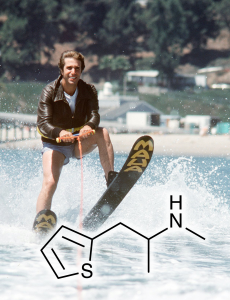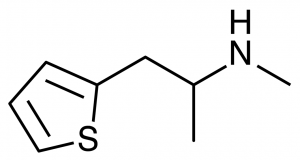AIRCR Jumps the Shark
The Association of Independent Research Chemical Retailers (AIRCR) is a collection of largely UK based research chemical vendors who have banded together in a stated attempt at creating a self-regulating organization. The motivation apparently was a result of the wide-scale scams and misrepresentation of product that occurred as the easy money of mephedrone sales started to dry up due to government regulation.
A noble goal indeed, as even before this the research chemical scene as a whole was not exactly a shining example of professionalism and restraint. Self-regulating organizations have a strong track record in many fields including finance, law, medicine, and engineering, and can demonstrate the ability of the market to regulate itself without requiring explicit government oversight. They can also quickly shift from self-regulating to self-serving organizations as their structures may encourage monopolistic behavior and cronyism.
AIRCR initially appeared to sit almost precisely between these two extremes. There was no question that after the March 2010 ban of mephedrone in the UK many research chemical vendors scrambled to provide any substitute product at all to the seething masses who had gotten used to the cheap and staggeringly effective drug. Hyperpotent long-lasting toxic stimulants, existing (and now illegal) mephedrone stocks rebranded and sold with nonsense chemical formulas, and simply fake product had created mass disillusionment within many retail customers, and retailers began to panic as they saw sales volumes plummet.
The retail strategy of AIRCR seems to be best outlined by the approach of a group of several UK based websites who are now AIRCR members. Their first mainstream exclusive compound 6-APB (“Benzo Fury”) was based off the structure of the classic MDA. Correctly identifying that the major issues leading to prohibition of mephedrone were indiscriminate doses and widely available cheap product, 6-APB was produced in limited runs and pressed into “pellets” (not pills, which would imply human consumption and not “research” of course). Presumably the hope was that with a more expensive product divided up into an appropriate dose overconsumption would be less of an issue. By having a monopoly on production and controlling supply, the compound could be rationed via economic pressures to those most likely to use it correctly - and more importantly, to those least likely to create unwanted media attention. While less profitable month to month than the wide-scale sales of mephedrone, it would hopefully provide a more consistent cash flow, few competitive pressures, and a longer production run leading to a better structured business model.
For new recreational entheogens with limited reinforcing characteristics this business model, while far from perfect, is a rational approach to the current regulatory environment. Retail levels sales to end users are largely tolerated if media attention and underage use is limited, a sort of “don’t ask, don’t tell” of the drug world. But with their latest product, AIRCR has succumbed completely to the temptations of monopoly and have fixed a noose about their own neck.
The compound in question is literally trademarked by AIRCR as methiopropamine, presumably to distract from the more conventional nomenclature of methamthetamine. The similarity to the much-demonized methamphetamine is no coincidence, as it can be thought of as methamphetamine where the phenyl group is replaced by a sulfur-containing thiophene group. Typically the replacement of a phenyl with a thiophene in this class of compounds results in increased inhibition of VMAT, which can be correlated with increased reinforcement and addictive effects. Preliminary tests appear to indicate similar qualitative effects to methamphetamine, a shorter duration, slightly lower potency, and more peripheral effects including vasoconstriction and sweating.
It seems almost a foregone conclusion to say that sales of a research chemical with this level of behavioural reinforcement and close structural similarity to one of the most publicly demonized drugs of our time will not end well. Supply controls will likely be insufficient to limit media attention, and these very supply controls are likely to be quickly circumvented as synthesis and precursors will be vigorously investigated by other labs wanting to get in on a fast buck. A shame that the first public attempt at self-regulation in the research chemical industry could fall to temptation so quickly.
Farewell AIRCR, we hardly knew ye.




